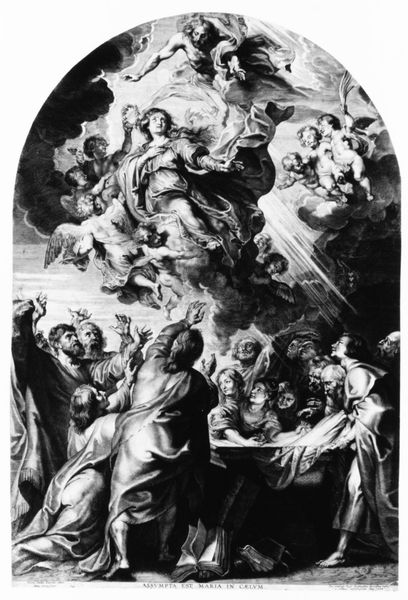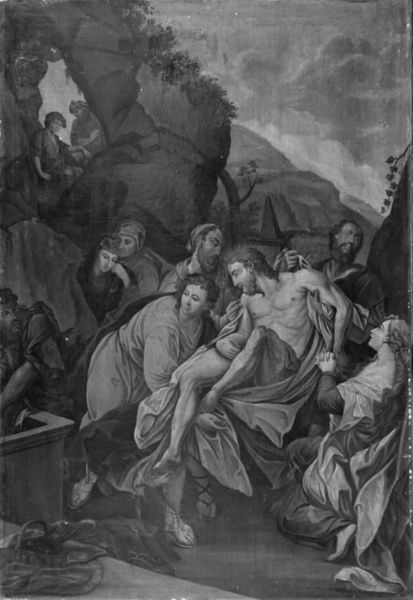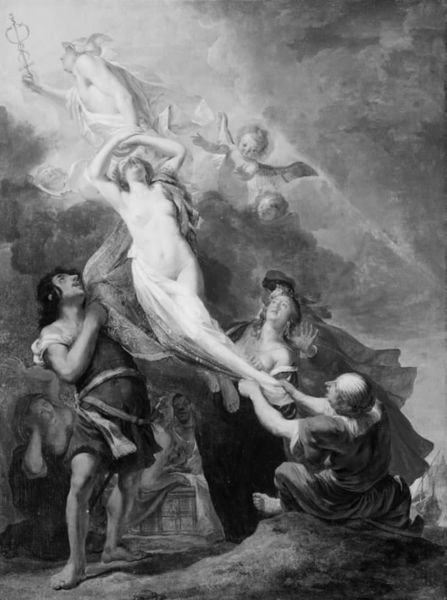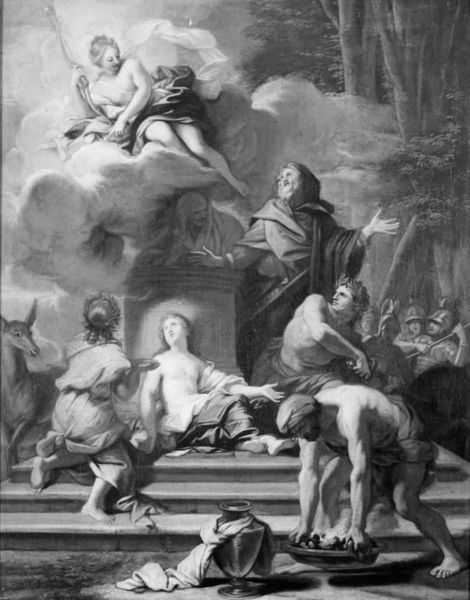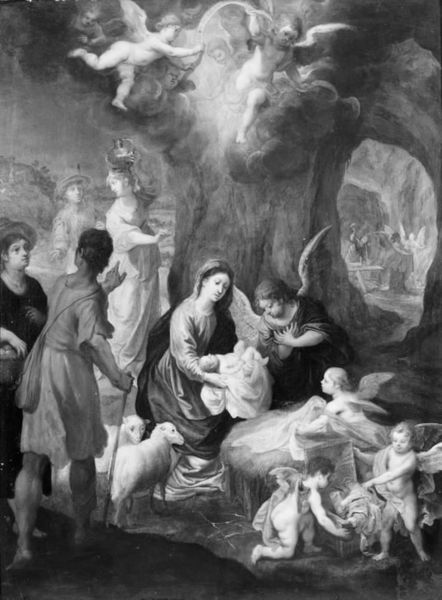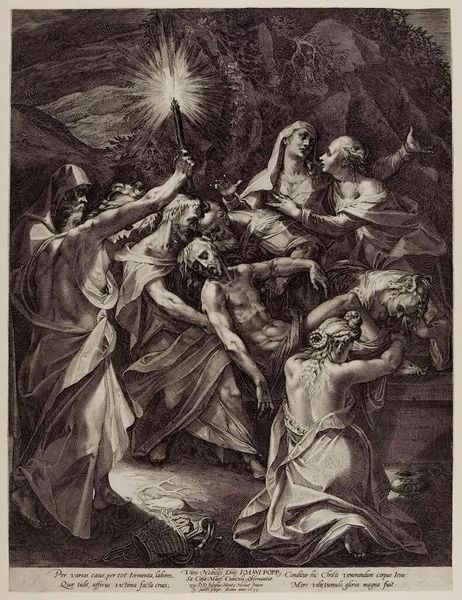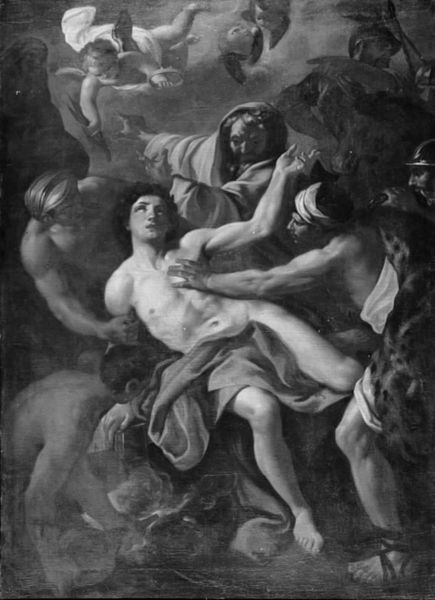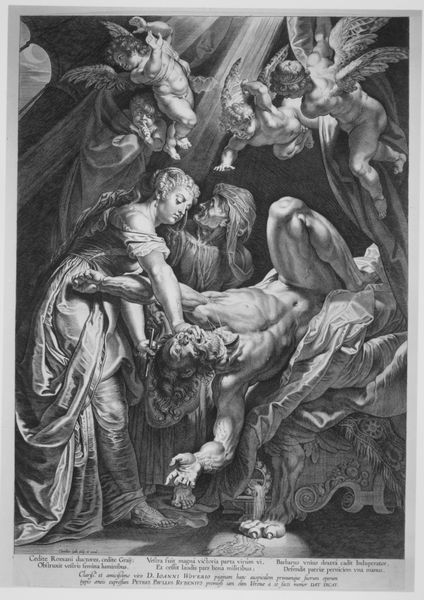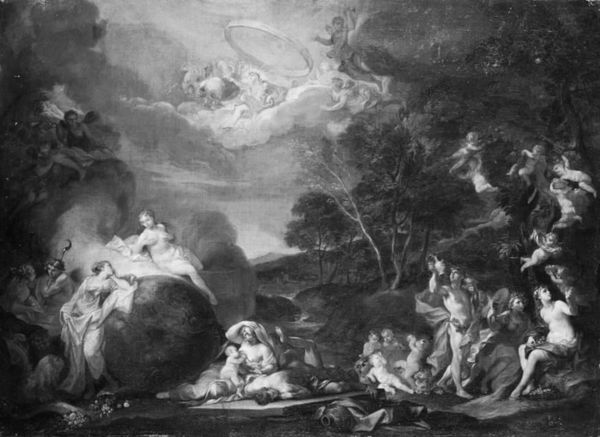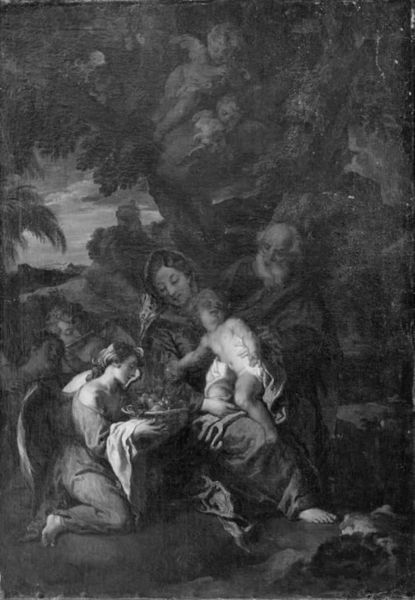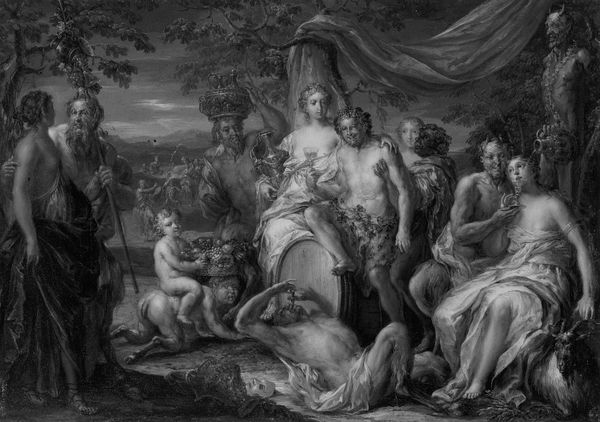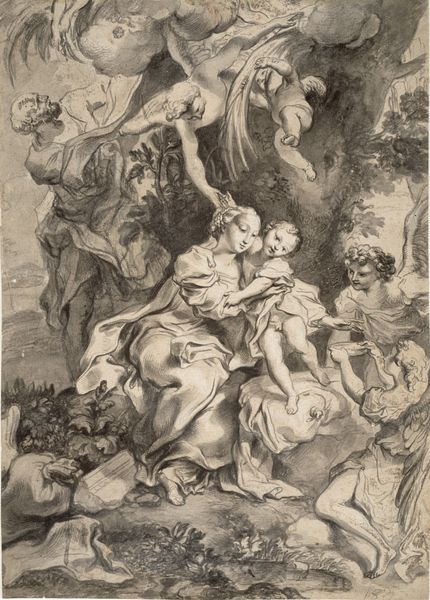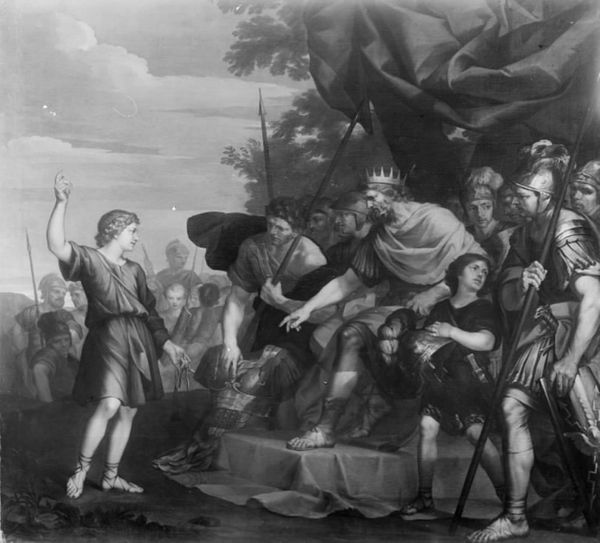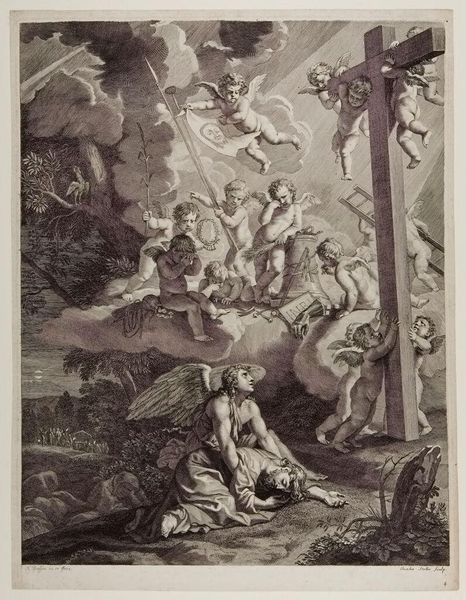
Christ Resurrected Reveals Himself to his Mother 1660
0:00
0:00
painting, oil-paint
#
baroque
#
painting
#
oil-paint
#
figuration
#
black and white
#
history-painting
#
monochrome
#
monochrome
Dimensions: 95.4 cm (height) x 67.3 cm (width) (Netto)
Curator: Let’s take a moment to appreciate this powerful oil on canvas. It's "Christ Resurrected Reveals Himself to his Mother," created around 1660 by Theodoor van Thulden. You can find this work at the SMK, Statens Museum for Kunst. Editor: Oh, it has such an ethereal quality, doesn't it? Like a hazy memory. Almost sepia-toned in feeling, though I understand it is a monochrome image. Curator: Precisely. Van Thulden was a key figure in the Baroque movement, and you can see the characteristics in the dramatic composition and dynamic energy despite the lack of vivid color, right? The subject itself – Christ’s return – lent itself to dramatic portrayals. The mother/son devotional imagery played well within that Counter-Reformation ethos that deeply informed artistic production. Editor: It's striking how Christ's figure seems both solid and ghost-like, simultaneously present and otherworldly. It speaks to this transformative moment, a threshold between earthly life and... well, whatever's next. Curator: That tension between the corporeal and the spiritual was very intentional. Paintings like this were didactic tools. And of course the composition is brilliant with ascending cherubs carrying lutes! It shows just how powerful imagery could be in conveying theological concepts and reaffirming religious doctrine to largely illiterate congregations. Editor: Makes you wonder, though, about the power dynamics here. She's kneeling, he's reaching. It isn't just a joyous reunion, but almost a transaction. What power does divine validation hold, particularly for Mary in the art world? Curator: A very astute observation. Remember that access to, or lack of access to artistic patronage and how theological debates are expressed or suppressed visually, affect meaning greatly. We need to acknowledge her active role, both as mother, and within broader church doctrine as intercessor for mankind. Her centrality to this reunion narrative gives her agency, but you are right – her subordinate position physically does suggest a complex relationship within religious hierarchies of power. Editor: Makes me think about how narratives, even divinely inspired ones, can trap as much as they elevate, y’know? Still, visually, this piece captivates. It manages to be both grandiose and intimately emotional. Curator: Well, perhaps it shows us the enduring legacy of Baroque art – prompting both grand narratives of religious history but intimate reflections on our shared humanity. Editor: Yes, and perhaps those things need each other. Thanks for shining a light on both aspects.
Comments
No comments
Be the first to comment and join the conversation on the ultimate creative platform.
